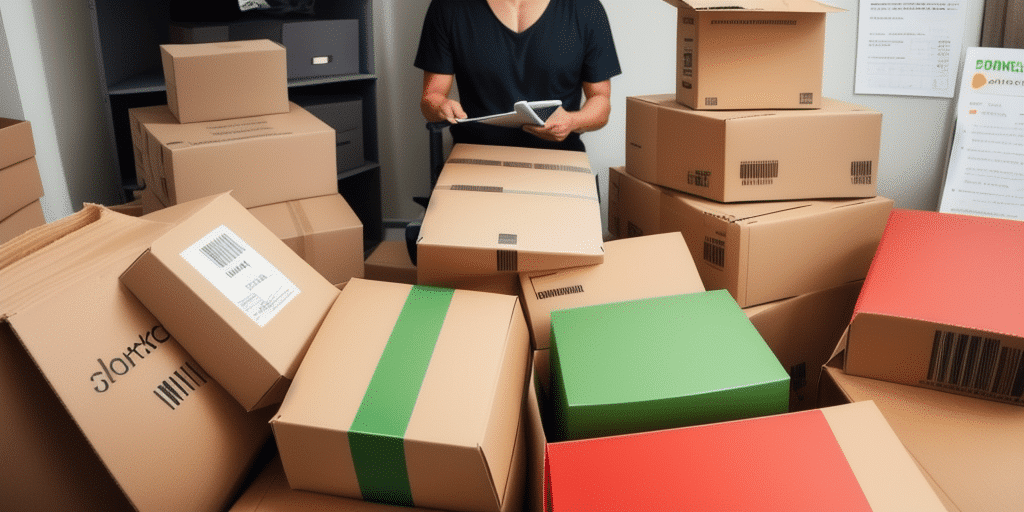Implementing a Free Shipping Program: A Proven Growth Strategy for Ecommerce Businesses
For ecommerce businesses, growth is essential to remain competitive in a crowded marketplace. One effective strategy to drive growth is by offering a free shipping program. This article explores the importance of free shipping, associated costs, determining the right minimum purchase amount, various types of free shipping offers, best practices for communication, leveraging free shipping for customer acquisition and retention, measuring program success, common pitfalls, and real-life case studies of successful implementations.
Why Free Shipping is Crucial for Ecommerce Growth
Free shipping has evolved from a premium perk to a customer expectation in the online shopping experience. According to a Shopify study, 70% of consumers are more likely to complete a purchase if free shipping is offered. Additionally, unexpected shipping costs are one of the leading causes of cart abandonment, with Barc's research indicating that 68% of online shoppers abandon their carts due to unexpected fees.
Offering free shipping can reduce cart abandonment rates and enhance your overall ecommerce conversion rate. Moreover, it provides a competitive edge, encouraging customers to choose your store over competitors that do not offer similar shipping incentives.
Another advantage is the potential to increase the average order value (AOV). Customers might add extra items to their cart to meet the free shipping threshold, thereby boosting your revenue. Additionally, free shipping fosters customer loyalty, as positive shopping experiences, including free shipping, enhance the likelihood of repeat purchases.
However, it's essential to assess the feasibility of offering free shipping. Shipping costs can significantly impact profit margins, especially for businesses dealing with large or heavy items. In such cases, offering free shipping on orders exceeding a certain amount or opting for flat-rate shipping fees might be more sustainable strategies.
Managing the Costs of Free Shipping
Understanding Shipping Expenses
Shipping is often one of the largest expenses for ecommerce businesses. Depending on the size, weight, and destination of products, shipping costs can vary widely. It's crucial to understand these costs to implement a free shipping program without eroding profit margins.
Strategies to Offset Shipping Costs
- Product Price Adjustment: Slightly increasing product prices can help cover shipping expenses without directly charging customers for shipping.
- Minimum Purchase Threshold: Setting a minimum purchase amount for free shipping encourages customers to spend more, offsetting the shipping costs.
- Negotiating with Carriers: Partnering with shipping carriers to secure discounted rates based on shipping volume can reduce overall shipping expenses.
- Alternative Shipping Methods: Utilizing regional carriers or parcel consolidators can offer more competitive shipping rates compared to major carriers.
Implementing these strategies requires careful analysis of your business’s shipping patterns and costs to ensure that the free shipping program remains profitable.
Determining the Optimal Minimum Purchase Amount
Factors to Consider
Setting the right minimum purchase amount is pivotal for the success of a free shipping program. If set too high, it may deter customers from completing their purchases. Conversely, if set too low, it might not cover the shipping costs effectively.
- Average Order Value (AOV): Analyze your current AOV to determine a threshold that encourages customers to spend slightly more.
- Shipping Costs: Ensure that the minimum amount covers the average shipping expense to maintain profitability.
- Profit Margins: Balance the minimum purchase amount with your profit margins to avoid compromising on profitability.
Competitive Benchmarking
Research what similar businesses in your industry are offering regarding free shipping thresholds. Understanding industry standards can help set a competitive yet profitable minimum purchase amount.
Clear Communication
Clearly display the minimum purchase requirement across your website and marketing materials. Consider using banners or pop-ups to remind customers of the threshold, reducing the likelihood of cart abandonment due to unmet shipping criteria.
Types of Free Shipping Offers
Free Shipping on All Orders
This approach simplifies the shipping policy and enhances customer perception by removing any barriers related to shipping costs. It can lead to higher customer satisfaction and potentially increased sales.
Conditional Free Shipping
Offering free shipping on orders that exceed a specified amount incentivizes customers to add more items to their carts to qualify, thereby increasing the AOV.
Free Shipping on Specific Items or Categories
Targeting free shipping offers on high-margin or promotional products can help drive sales of those items while managing overall shipping costs.
Each type of free shipping offer has its own set of advantages and disadvantages. It’s essential to choose the one that best aligns with your business objectives and customer expectations.
Best Practices for Communicating Free Shipping Offers
Website Integration
Use prominent website elements such as banners, pop-ups, and notifications to ensure that the free shipping offer is visible to all visitors. Clear and concise messaging can effectively communicate the benefits and requirements of the offer.
Email Marketing
Incorporate free shipping promotions into your email campaigns. Highlighting free shipping in subject lines or email content can increase open rates and encourage clicks.
Product Descriptions
Include mentions of free shipping within product descriptions to remind customers of the shipping benefits associated with their purchases.
Exclusive Offers
Provide free shipping as a reward for loyalty program members or customers who refer friends. Exclusive offers can enhance customer loyalty and drive new customer acquisitions.
Leveraging Free Shipping for Customer Acquisition and Retention
Attracting New Customers
Offering free shipping on first purchases can entice new customers to try your products, increasing the likelihood of repeat business.
Encouraging Repeat Purchases
Providing free shipping for subsequent purchases or during special promotions can keep existing customers engaged and encourage them to return.
Reducing Cart Abandonment
Free shipping mitigates one of the primary reasons for cart abandonment—unexpected shipping costs. By addressing this concern, you can increase the completion rate of purchases.
While offering free shipping involves costs, studies have demonstrated that customers are willing to spend more when free shipping is available, leading to overall increased sales and customer satisfaction.
Measuring and Optimizing Your Free Shipping Program
Key Performance Indicators (KPIs)
- Conversion Rate: Track the percentage of visitors who complete a purchase.
- Average Order Value (AOV): Monitor changes in AOV to assess the impact of the free shipping threshold.
- Shipping Costs: Analyze the overall shipping expenses to ensure the program remains cost-effective.
Customer Feedback
Gather insights through surveys or customer reviews to understand the perceived value of the free shipping offer. Use this feedback to make informed adjustments to the program.
Continuous Improvement
Regularly review the performance metrics and customer feedback to refine the free shipping strategy. Adjust the minimum purchase amount, offer types, or communication methods as needed to optimize results.
Common Pitfalls to Avoid
Implementing a free shipping program successfully requires avoiding common mistakes that can undermine its effectiveness:
- Setting a High Minimum Threshold: Excessively high minimum purchase amounts can deter customers from completing their purchases.
- Poor Communication: Unclear or hidden free shipping terms can lead to customer frustration and cart abandonment.
- Ignoring Shipping Costs: Failing to adequately account for shipping expenses can erode profit margins.
- Neglecting Shipping Quality: Offering free shipping without ensuring reliable and timely delivery can harm customer satisfaction and loyalty.
Regular evaluation and adjustment of the free shipping program can help mitigate these issues and maintain its effectiveness.
Case Studies: Successful Implementations of Free Shipping
Amazon
Amazon's free shipping program, particularly for Prime members, has been a cornerstone of its customer loyalty strategy. Prime members enjoy benefits like free two-day shipping, which enhances their shopping experience and encourages continued patronage.
Zappos
Zappos offers free shipping on all orders with free returns, fostering a risk-free shopping environment. This policy has significantly contributed to high customer satisfaction and repeat business.
ASOS
Clothing retailer ASOS provides free shipping on orders exceeding a certain amount. This strategy has effectively increased their AOV and customer loyalty, making it a key component of their growth strategy.
Glossier
Beauty brand Glossier offers free shipping on all orders, regardless of the purchase amount. This approach has attracted a large customer base and enhanced brand loyalty by simplifying the purchasing process.
These case studies demonstrate that thoughtfully implemented free shipping programs can drive significant growth, improve customer retention, and enhance overall business performance.
Conclusion
Implementing a free shipping program can be a powerful growth catalyst for ecommerce businesses. By understanding the associated costs, setting appropriate minimum purchase amounts, effectively communicating the offer, and continuously measuring and optimizing the program, businesses can enhance conversion rates and foster customer loyalty.
It's crucial to carefully analyze the impact of free shipping on profit margins and to strategically time free shipping offers, such as during peak shopping seasons, to maximize their effectiveness. When executed thoughtfully, free shipping can be a key differentiator that drives sustainable growth and competitive advantage in the ecommerce landscape.




















